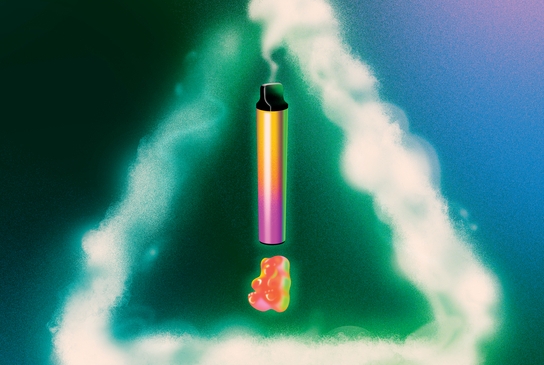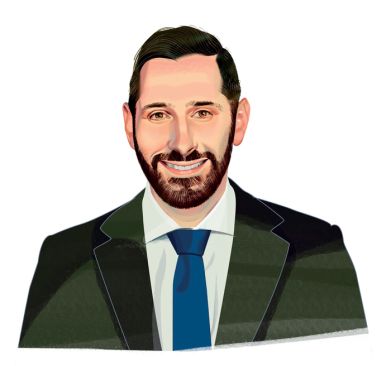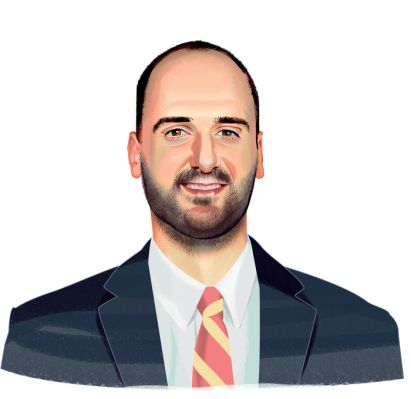
While most states have legalized or decriminalized marijuana, regulation is limited, and products range in form from leaves to vapes to edibles and can carry far higher concentrations of psychoactive ingredients than were typical decades ago. How can medicine and public health best address these largely unregulated, readily available and potentially harmful products?
Dr. Brian Wiener
Assistant Professor of Clinical Emergency Medicine
Recently, we encountered a patient who had consumed leftover food from their workplace. They mistakenly ate a cookie resembling an Oreo, which turned out to be a "Stoneo" containing 500 milligrams of THC — the psychoactive component of marijuana. (The recommended starting dose for a first-time marijuana user is typically around 5-10 milligrams.) This patient, having never used marijuana before, arrived at the Emergency Department unconscious. Without the critical history provided by a family member and the wrapper indicating the high THC content, we might have suspected a more serious condition, such as a brain hemorrhage. Fortunately, with this information, we were able to closely monitor the patient for one to two days — the time it took for them to regain consciousness — and discharged them without the need for an extensive workup.

Dr. Brian Wiener
The concentration of THC in marijuana has surged dramatically over the past 50 years, leading to an increase in unintentional overdoses, which have become a significant public health concern. These cases are now among the most common consultations I see, occurring more than once a week on average.
In New York City, the proliferation of smoke shops on nearly every block has raised concerns about the legality and safety of the THC-containing products they sell. Many of these products are likely unregulated, posing potential risks to consumers. Stricter enforcement to limit the illegal sale of marijuana would enhance these products’ safety, reducing the likelihood of adverse effects.
While significant side effects from THC are uncommon in adults, managing them in children is more challenging. We’ve observed seizures, myoclonic jerks, and concerning symptoms such as roving eye movements in pediatric patients. Additionally, the incidence of cannabis hyperemesis — characterized by recurrent, uncontrollable vomiting in individuals dependent on marijuana — has increased significantly.
Advocating for the proper regulation and packaging of THC products is crucial. I’m encouraged by the FDA's efforts to restrict branding that could easily lead children to mistake THC-laced products for familiar snacks and candies. Education on marijuana safety, particularly the importance of keeping these products away from children and using lockboxes for highly concentrated items like gummies, is vital.
In time, as more smoke shops transition to selling legally regulated products, we anticipate a decrease in safety concerns. However, until that shift occurs, the market remains a growing challenge.
++
Dr. Julen Harris
Assistant Professor of Clinical Pediatrics
Assistant Attending Physician, NewYork-Presbyterian/Weill Cornell Medical Center
An estimated 30% of high school seniors are using cannabis in some form, and vaping has become one of the most common methods. Vapes can be packaged as sleek technologic devices, with fun colors and different flavors — all of which are directly marketed toward adolescents. Recently, I asked a 15-year-old patient about her experience with substance use and she said, "Doctor, it's crazy out here — have you seen these vapes? They even have games on them now!"

Dr. Julen Harris
Vaping devices can deliver high concentrations of nicotine and THC, and rates of dual use of cannabis and nicotine are increasing among 12-17-year-olds. Some also use wrappers that contain tobacco to smoke cannabis. Several studies have shown that adolescents who use cannabis are at higher risk of persistent nicotine use.
Additionally, the rise of cannabinoid hyperemesis has been linked in part to higher levels of THC consumption. The interaction of THC with certain brain receptors can create a cycle where users replace food with smoking or vaping, leading some adolescents with heavy cannabis use — many of whom also use nicotine — to present with weight loss. Many of these patients use cannabis to self-medicate mental health conditions they may not be receiving formal treatment for, such as anxiety, depression, ADHD, and PTSD.
Adolescents often minimize the risks of cannabis compared to traditional cigarettes and other substances. While more research is needed to better understand the effects of cannabis — and particularly the interplay with nicotine — on adolescent health long term, we know that early cannabis use has a significant negative impact on the developing adolescent brain.
It’s important for pediatricians to model how to have conversations about substance use with adolescents because parents often don't know how. We must be careful to balance discussing the health and safety concerns of cannabis and nicotine use without catastrophizing, as this often shuts down adolescents’ engagement in the conversation.
Parents should bring up these discussions in a warm, nonjudgmental manner in order to keep communication open with their teens. They should voice concerns and ask open-ended questions of their teen’s perspectives while engaging in active listening. These discussions should start early in adolescence and recur throughout, as teens’ exposures and perspectives may change during this time of development.
++
Dr. Jonathan Avery
Vice Chair, Addiction Psychiatry, Weill Cornell Medicine
Director, Addiction Psychiatry, NewYork-Presbyterian/Weill Cornell Medical Center
Associate Professor of Clinical Psychiatry
Stephen P. Tobin and Dr. Arnold Cooper Associate Professor in Consultation Liaison Psychiatry
It's hard to have nuanced communication about substance use in general, and marijuana seems even harder to talk about than opioids and alcohol.
In some ways, the addiction community champions the legalization of marijuana because we thought too many people were being punished or imprisoned for marijuana crimes or marijuana use disorder, rather than getting treatment, and there was a racial component to that. It is now legal to buy marijuana in New York state if you are 21 or older, and cannabis is legal or decriminalized to various degrees in most other states, too.

Dr. Jonathan Avery
One consequence is that the access has increased. The perceived safety of marijuana is up, so we are seeing more people misuse marijuana.
There are many who will use it and not get into trouble. My focus as an addiction provider is on at-risk populations: Adolescents with developing brains, people with existing mental health struggles, addiction issues or family histories of addiction.
This isn't your parents’ weed. This is weed that's potentially more potent, more addictive, and easier to use.
If you are going to use and in a harm reduction way, the goal is not to use daily and to find product that has more CBD — the non-impairing compound in marijuana — to THC. You want as low a THC product as possible, so it's less psychoactive and addictive.
Ideally, you want to know where you're getting it from. The false promise of some of these pop-up stores is that they act like they're legitimate, but they may not be giving you what they advertise. They may have contaminants or other stuff. And kids aren’t buying from the licensed cannabis stores.
I think treating marijuana like alcohol is where it's going to end up. Where yes, it's something that's legal, there's access, you're seeing more adolescents using it and maybe you can use it safely, but there's still real risk of developing addiction and getting toxic on it and ending up in trouble.
The goal is how to provide more legal and affordable access without making it so available and the perceived harm so low that more and more people use and end up addicted. It’s a fine line to straddle, and it's hard to straddle it well.
If you are concerned about an overdose or poisoning, please call your local poison control center at 1-800-222-1222.
This story will appear in the Fall 2024 issue of Impact: Weill Cornell Medicine Magazine.

